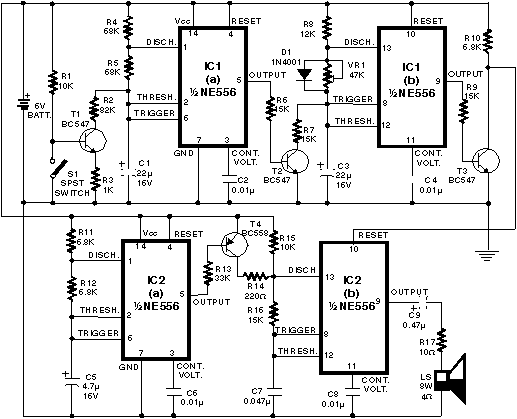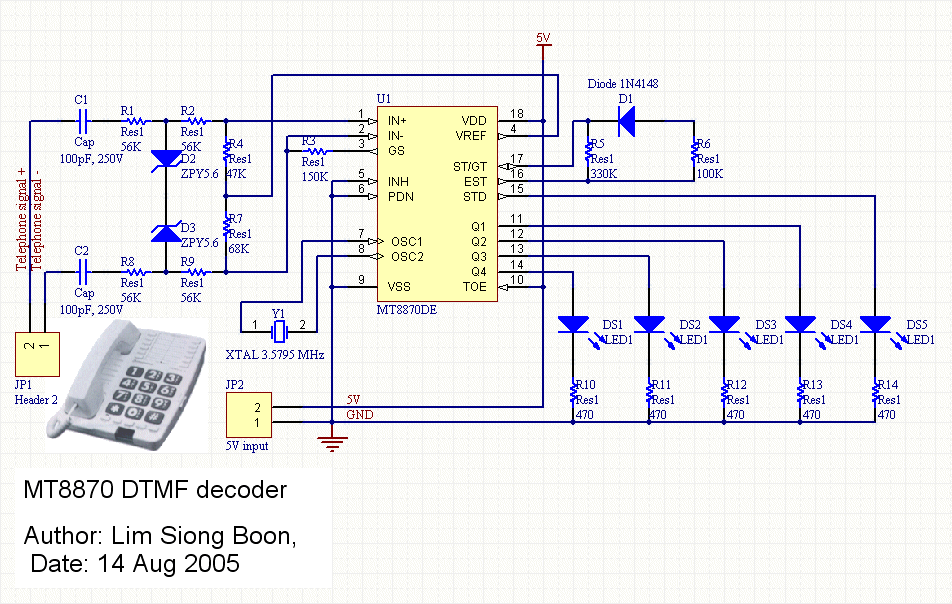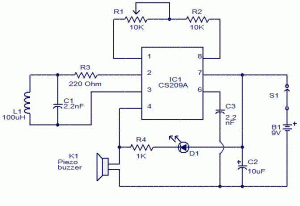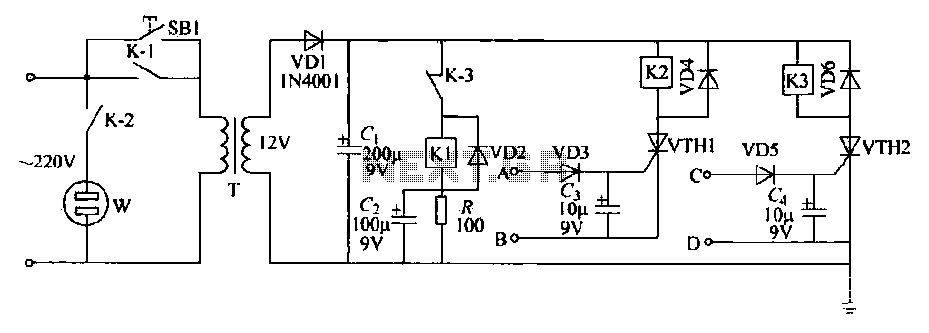
Telephone Ringer using 556 dual timers

Telephone ringer utilizing 556 dual timers. This circuit generates ringing tones resembling those of a telephone by employing modulated rectangular waves of varying time periods.
The telephone ringer circuit employs two 556 dual timer ICs configured to generate modulated rectangular waveforms. The 556 timer is a versatile integrated circuit that combines two 555 timer circuits, allowing for a compact design while providing multiple timing functions. In this application, the timers are set up in astable mode to create square wave outputs, which can be adjusted by varying the resistor and capacitor values in the timing network.
The first timer generates a base frequency that simulates the ringing tone of a traditional telephone. This frequency can be adjusted by changing the values of the resistors and capacitors connected to the timing pins of the 556 IC. The output from this timer is then fed into the second 556 timer, which modulates the frequency to create a more realistic ringing effect. By varying the duty cycle and frequency of the output from the second timer, different ringing patterns can be produced, mimicking the tones of various telephone systems.
The circuit can be powered by a standard DC power supply, typically between 5V to 15V, depending on the specifications of the 556 timers used. The output of the second timer can be connected to a small speaker or a piezoelectric buzzer, which will convert the electrical signals into audible ringing tones.
Additional components such as diodes may be included to protect the circuit from voltage spikes, while capacitors can be used for filtering and stability. Overall, this telephone ringer circuit provides an effective solution for simulating traditional telephone ringing tones in various electronic projects.Telephone Ringer using 556 dual timers. Using modulated rectangular waves of different time periods, The circuit presented here produces ringing tones similar to those produced by a telephone. The. 🔗 External reference
The telephone ringer circuit employs two 556 dual timer ICs configured to generate modulated rectangular waveforms. The 556 timer is a versatile integrated circuit that combines two 555 timer circuits, allowing for a compact design while providing multiple timing functions. In this application, the timers are set up in astable mode to create square wave outputs, which can be adjusted by varying the resistor and capacitor values in the timing network.
The first timer generates a base frequency that simulates the ringing tone of a traditional telephone. This frequency can be adjusted by changing the values of the resistors and capacitors connected to the timing pins of the 556 IC. The output from this timer is then fed into the second 556 timer, which modulates the frequency to create a more realistic ringing effect. By varying the duty cycle and frequency of the output from the second timer, different ringing patterns can be produced, mimicking the tones of various telephone systems.
The circuit can be powered by a standard DC power supply, typically between 5V to 15V, depending on the specifications of the 556 timers used. The output of the second timer can be connected to a small speaker or a piezoelectric buzzer, which will convert the electrical signals into audible ringing tones.
Additional components such as diodes may be included to protect the circuit from voltage spikes, while capacitors can be used for filtering and stability. Overall, this telephone ringer circuit provides an effective solution for simulating traditional telephone ringing tones in various electronic projects.Telephone Ringer using 556 dual timers. Using modulated rectangular waves of different time periods, The circuit presented here produces ringing tones similar to those produced by a telephone. The. 🔗 External reference





